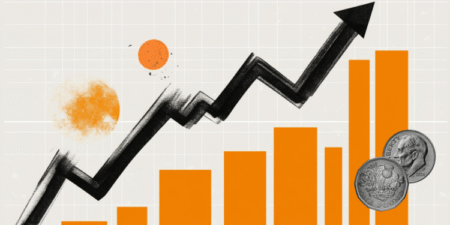- Gold fluctuates without a clear bias, with downside attempts contained above the $3,340 area.
- Volatility remains low on Thursday, with investors awaiting US PPI figures due later in the day.
- XAU/USD consolidates previous losses with $3,375 holding bulls for now.
Gold (XAU/USD) reversal from last week’s highs right above $3,400 has been contained at the $3,335-$3,345 area, where the pair has found support at August 4 and 5 lows, and the 50% Fibonacci retracement of the early August rally.
The precious metal has been trading without a clear bias during the last few days, and upside attempts remain capped on Thursday, with investors watching from the sidelines, ahead og US Jobless Claims and PPI data releases, due later on the day.
Technical analysis: Gold consolidates after hitting the wedge’s target
From a technical perspective, XAU/USD is consolidating after reaching the target of a broken wedge pattern at $3,345. The long wicks in the daily chart’s candles highlight investors’ hesitation at current levels.
On the downside, a confirmation below the August 12 low at $3,330 level would bring the July 29 low and July 31 highs, at the $3,305-$3,315 area back to the bears’ focus. Further down, the next target would be the August 1 low, at $3,282.
Upside attempts, on the other hand, remain limited below the intraday’s high, at $3,375. A bullish reaction above here would shift the focus to the $3400-$3410 area (August 7 and 10 highs) ahead of the late July highs, at $3440.
Gold FAQs
Gold has played a key role in human’s history as it has been widely used as a store of value and medium of exchange. Currently, apart from its shine and usage for jewelry, the precious metal is widely seen as a safe-haven asset, meaning that it is considered a good investment during turbulent times. Gold is also widely seen as a hedge against inflation and against depreciating currencies as it doesn’t rely on any specific issuer or government.
Central banks are the biggest Gold holders. In their aim to support their currencies in turbulent times, central banks tend to diversify their reserves and buy Gold to improve the perceived strength of the economy and the currency. High Gold reserves can be a source of trust for a country’s solvency. Central banks added 1,136 tonnes of Gold worth around $70 billion to their reserves in 2022, according to data from the World Gold Council. This is the highest yearly purchase since records began. Central banks from emerging economies such as China, India and Turkey are quickly increasing their Gold reserves.
Gold has an inverse correlation with the US Dollar and US Treasuries, which are both major reserve and safe-haven assets. When the Dollar depreciates, Gold tends to rise, enabling investors and central banks to diversify their assets in turbulent times. Gold is also inversely correlated with risk assets. A rally in the stock market tends to weaken Gold price, while sell-offs in riskier markets tend to favor the precious metal.
The price can move due to a wide range of factors. Geopolitical instability or fears of a deep recession can quickly make Gold price escalate due to its safe-haven status. As a yield-less asset, Gold tends to rise with lower interest rates, while higher cost of money usually weighs down on the yellow metal. Still, most moves depend on how the US Dollar (USD) behaves as the asset is priced in dollars (XAU/USD). A strong Dollar tends to keep the price of Gold controlled, whereas a weaker Dollar is likely to push Gold prices up.
Read the full article here
















